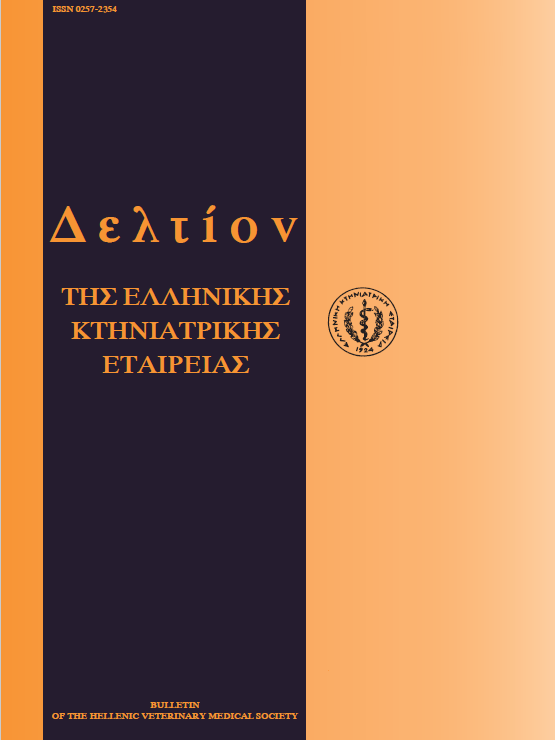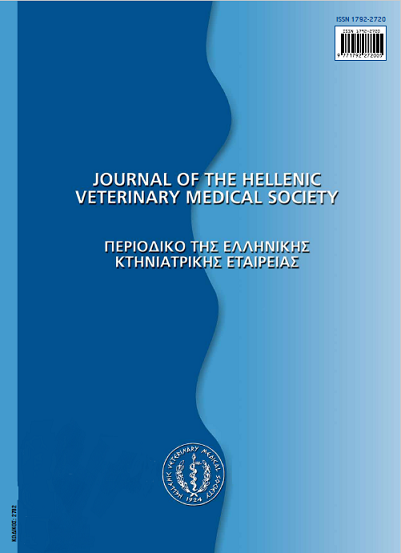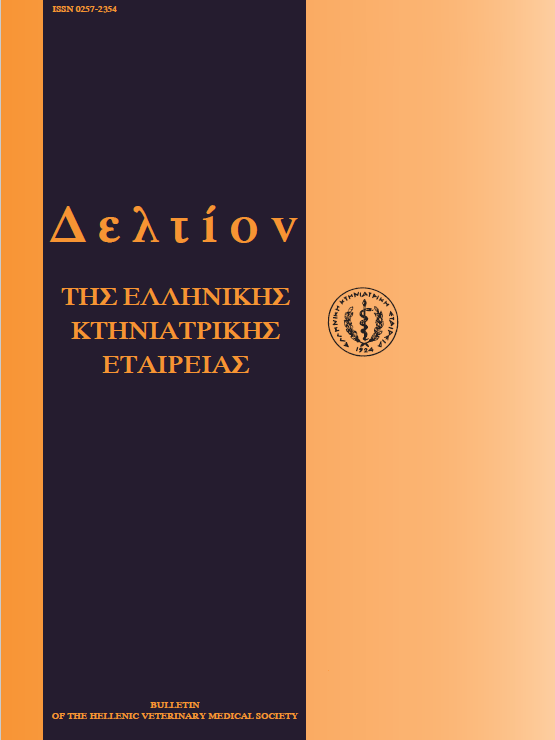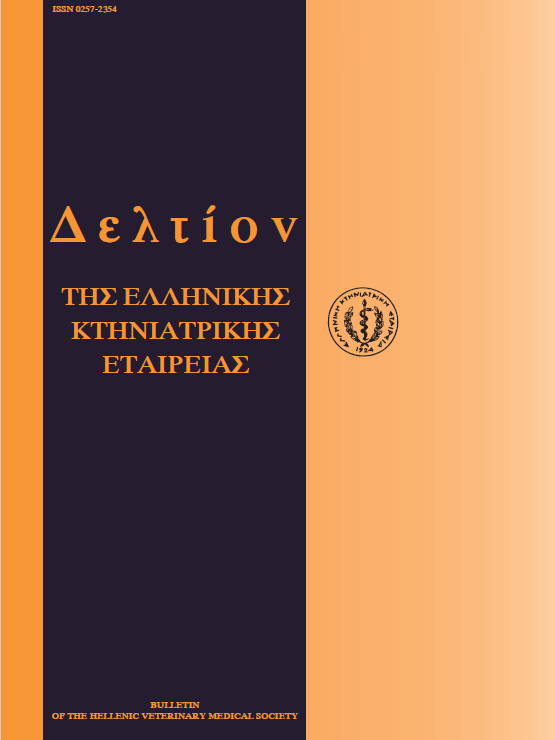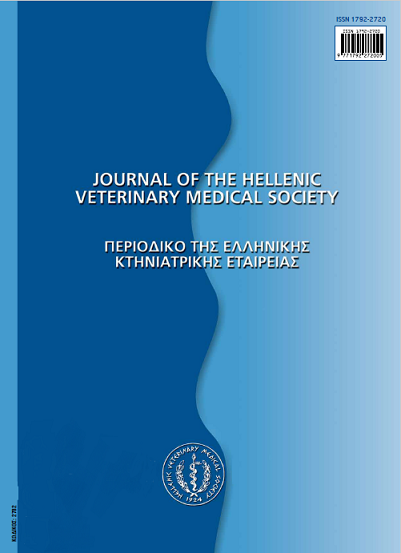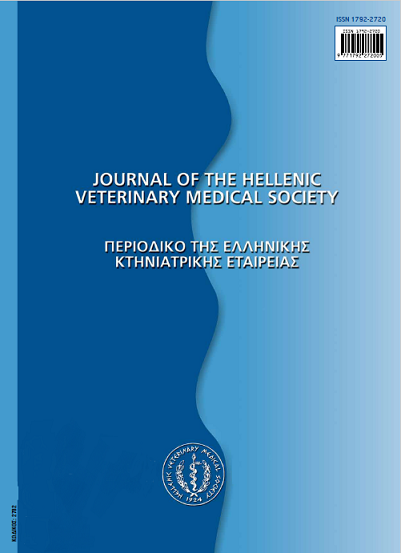Νεότερα δεδομένα πάνω στη σπειροκέρκωση του σκύλου

Περίληψη
Η σπειροκέρκωση στο σκύλο, που οφείλεται στο νηματώδες παράσιτο Spirocerca lupi, συνήθως είναι ασυμπτωματική και σε λίγες περιπτώσεις συμπτωματική. Στη νεκροψία σκύλων,που προέρχονται από περιοχές στις οποίες η παρασίτωση αυτή ενδημεί, μπορεί να βρεθούν κοκκιώματα και σαρκώματα στο τοίχωμα του οπίσθιου τριτημορίου του οισοφάγου, ανευρύσματα της αορτής, παραμορφωτική σπονδύλωση, σπονδυλίτιδα ή δισκοσπονδυλίτιδα στους θωρακικούς σπονδύλους, αλλοιώσεις της υπερτροφικής οστεοπάθειας και ενδεχομένως νέκρωση των σιελογόνων αδένων σε διάφορους συνδυασμούς. Τα συνηθέστερα συμπτώματα είναι οι αναγωγές, οι εμετοί, η οισοφαγοδυνία, η σιελόρροια, η προοδευτική απώλεια του σωματικού βάρους, η δύσπνοια και η επεισοδιακή μέλαινα. Ορισμένα όμως ζώα ενδέχεται να εμφανίσουν, αν και σπάνια, χωλότητα με πάχυνση των άκρων, παραπάρεση-παραπληγία ή αιφνίδιο θάνατο. Η διάγνωση θα επιβεβαιωθεί με την κοπρανολογική εξέταση (ανεύρεση των αυγών),τον ακτινολογικό έλεγχο του θώρακα (μάζα στο οπίσθιο μεσοπνευμόνιο, αλλοιώσεις στους σπονδύλους) και ιδιαίτερα την οισοφαγοσκόπηση (οπτική επαφή με τα παρασιτικά οζίδια). Με την υποδόρια χορήγηση αβερμεκτινών (ντοραμεκτίνη, ιβερμεκτίνη) επιτυγχάνεται η υποχώρηση της οισοφαγικής δυσφαγίας, παράλληλα με την παλινδρόμιση των παρασιτικών κοκκιωμάτων και την αναστολή της παραγωγής αυγών από τα ενήλικα θηλυκά παράσιτα.
Λεπτομέρειες άρθρου
- Πώς να δημιουργήσετε Αναφορές
-
MYLONAKIS (Μ.Ε. ΜΥΛΩΝΑΚΗΣ) M. E., KOUTINAS (Α.Φ. ΚΟΥΤΙΝΑΣ) A. F., & RALLIS (Τ. ΡΑΛΛΗΣ) T. (2017). Νεότερα δεδομένα πάνω στη σπειροκέρκωση του σκύλου. Περιοδικό της Ελληνικής Κτηνιατρικής Εταιρείας, 54(4), 347–350. https://doi.org/10.12681/jhvms.15344
- Τεύχος
- Τόμ. 54 Αρ. 4 (2003)
- Ενότητα
- Review Articles
Οι συγγραφείς των άρθρων που δημοσιεύονται στο περιοδικό διατηρούν τα δικαιώματα πνευματικής ιδιοκτησίας επί των άρθρων τους, δίνοντας στο περιοδικό το δικαίωμα της πρώτης δημοσίευσης.
Άρθρα που δημοσιεύονται στο περιοδικό διατίθενται με άδεια Creative Commons 4.0 Non Commercial και σύμφωνα με την άδεια μπορούν να χρησιμοποιούνται ελεύθερα, με αναφορά στο/στη συγγραφέα και στην πρώτη δημοσίευση για μη κερδοσκοπικούς σκοπούς.
Οι συγγραφείς μπορούν να καταθέσουν το άρθρο σε ιδρυματικό ή άλλο αποθετήριο ή/και να το δημοσιεύσουν σε άλλη έκδοση, με υποχρεωτική την αναφορά πρώτης δημοσίευσης στο J Hellenic Vet Med Soc
Οι συγγραφείς ενθαρρύνονται να καταθέσουν σε αποθετήριο ή να δημοσιεύσουν την εργασία τους στο διαδίκτυο πριν ή κατά τη διαδικασία υποβολής και αξιολόγησής της.





